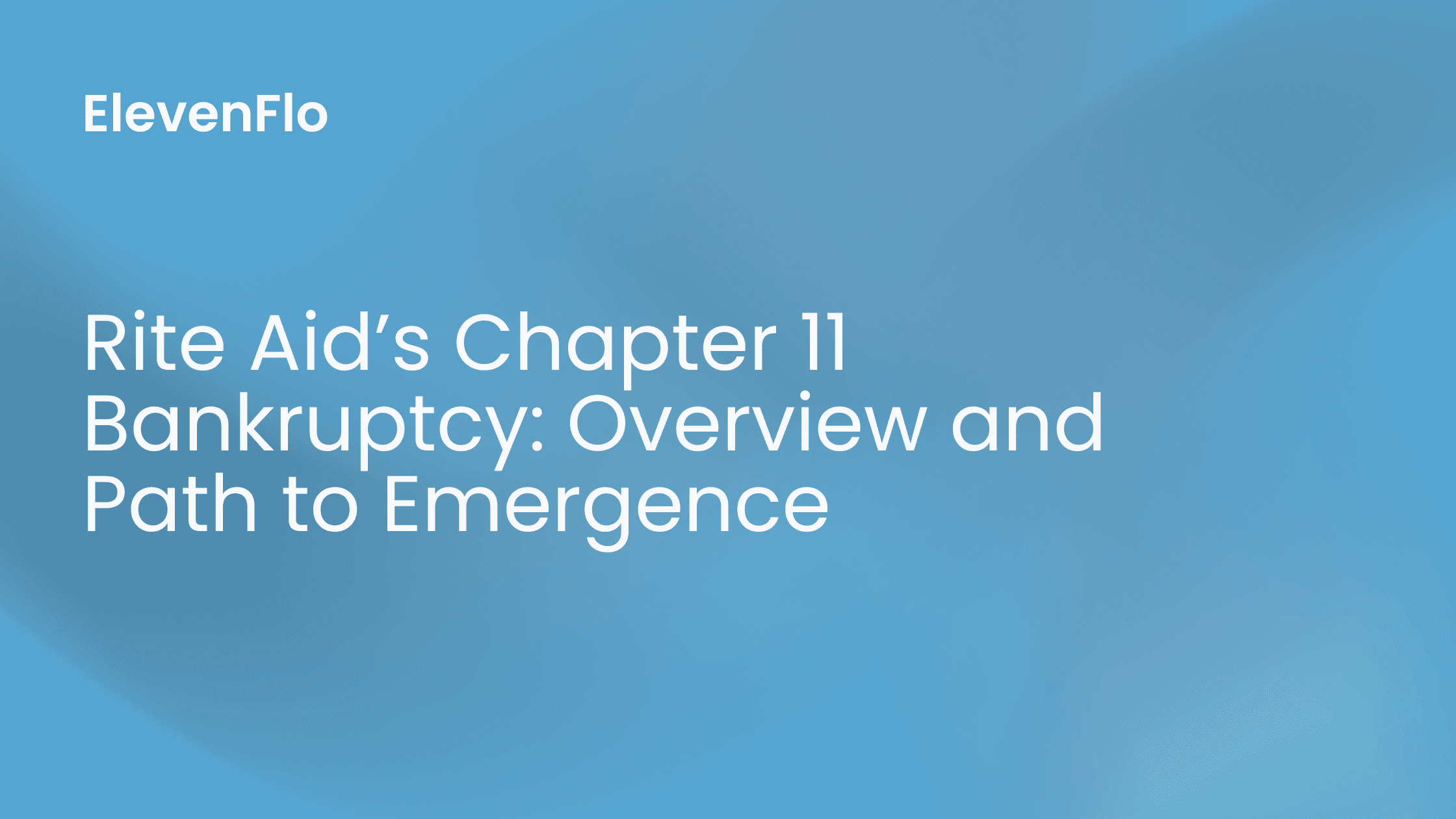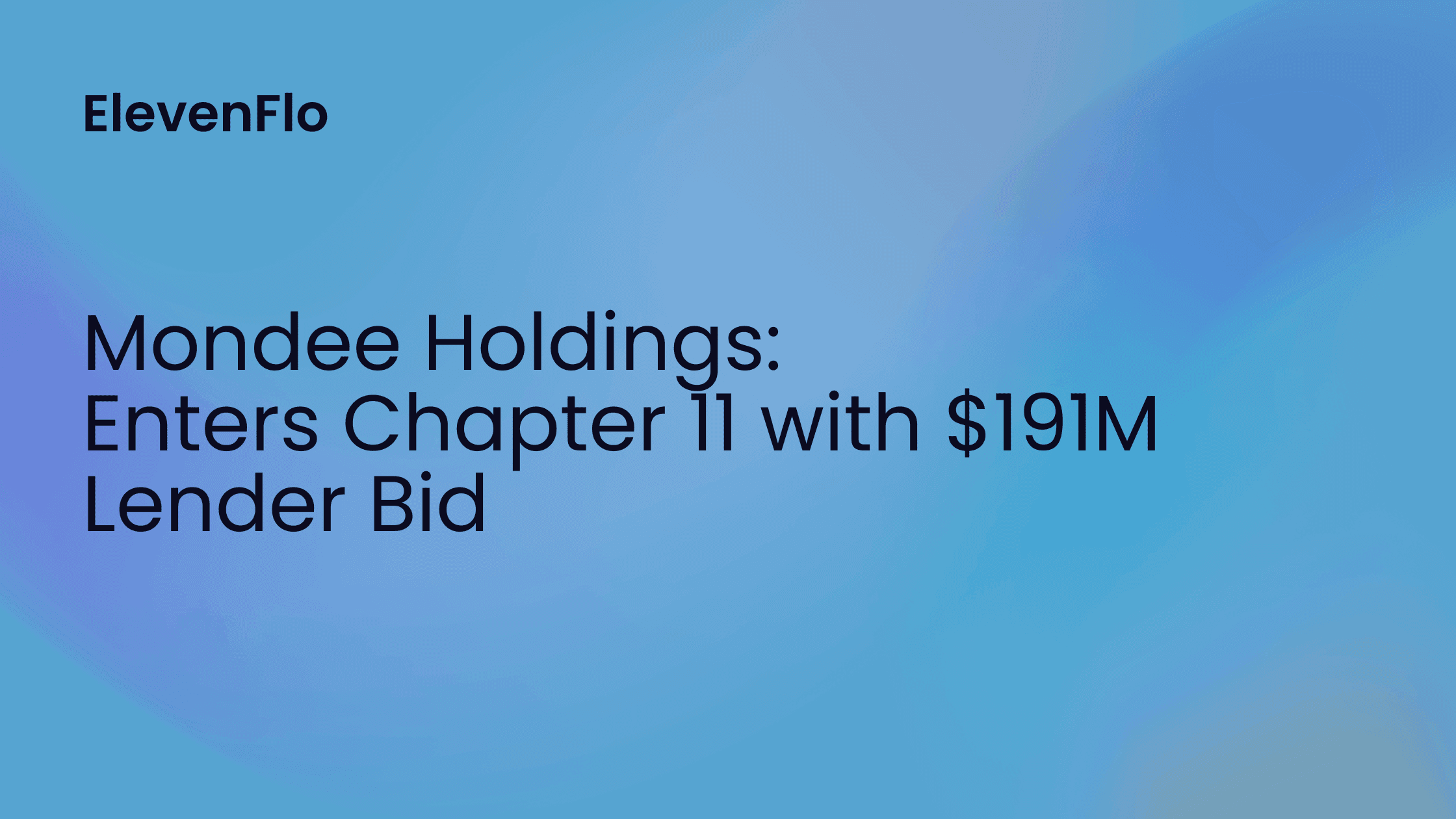Marin Software Bankruptcy: Pre-Negotiated Chapter 11

Analysis of Marin Software's strategic Chapter 11 bankruptcy filing, pre-negotiated with ESW Capital affiliate Kaxxa Holdings for a 60-day emergence timeline.
On July 1, 2025, Marin Software Incorporated filed for Chapter 11 bankruptcy protection in the United States Bankruptcy Court for the District of Delaware, marking the culmination of a strategic process to address years of declining revenue and operational losses. The San Francisco-based digital marketing software company, once a pioneer in the advertising technology sector, entered bankruptcy through a pre-negotiated agreement with Kaxxa Holdings, Inc., an affiliate of private equity firm ESW Capital.
Financial Distress and Path to Bankruptcy
Marin Software's bankruptcy filing represents the final chapter in a prolonged period of financial deterioration that began in 2016. According to the company's first day declaration filed by CFO Robert Bertz, the company experienced year-over-year revenue decline for nearly a decade. By November 2023, Marin Software disclosed substantial doubt about its ability to continue as a going concern, triggering the board of directors to engage Evercore Inc. as investment banker to explore strategic alternatives.
The company's workforce reduction efforts were particularly severe, with employment levels decreasing by nearly 90% over the nine months preceding the bankruptcy filing. Despite these drastic cost-cutting measures, Marin Software continued to incur significant operating losses, ultimately necessitating the Chapter 11 filing.
Failed Sale Process and Liquidation Plan
Prior to the bankruptcy filing, Marin Software's board approved a voluntary liquidation and dissolution plan on April 9, 2025. The Plan of Dissolution, subsequently approved by stockholders on June 11, 2025, contemplated paying general unsecured claims in full but would have left insufficient funds for any distribution to equity holders. This liquidation scenario changed when Kaxxa Holdings emerged as a strategic buyer in late May 2025.
Pre-Negotiated Chapter 11 Structure
The Marin Software bankruptcy filing represents a pre-negotiated Chapter 11 case designed for expedited confirmation and emergence. Bloomberg Law reported that the company voluntarily initiated the pre-negotiated case with strategic investor Kaxxa Holdings providing $5.5 million in funding upon restructuring completion.
The pre-negotiated structure offers several advantages for Marin Software's stakeholders. The company expects to emerge from the court-supervised reorganization process in approximately 60 days, maintaining full operational capacity throughout the bankruptcy proceedings. This accelerated timeline minimizes business disruption and preserves customer relationships during the transition period.
DIP Financing and Creditor Treatment
Marin’s debtor-in-possession (DIP) financing totals up to $1.2 million from 5Y, LLC (an affiliate of Kaxxa Holdings) to fund operations during the Chapter 11 case. Separately, upon consummation of the restructuring, Kaxxa has agreed to provide $5.5 million in plan funding, which the company says will allow payment in full to all known creditors, with any remaining cash distributed to stockholders.
Market Position and Competitive Challenges
Marin Software's bankruptcy reflects broader challenges within the advertising technology sector. The company, incorporated in Delaware in 2006, initially achieved significant success with its software-as-a-service (SaaS) advertising management platform. At its peak, Marin Software operated offices globally and served performance-driven advertisers and agencies managing digital advertising spend across search, social, and eCommerce channels.
The company's decline coincided with fundamental shifts in the digital advertising landscape. Major platforms including Google and Facebook developed their own sophisticated advertising management tools, reducing demand for third-party solutions. Additionally, the consolidation of advertising spend among dominant platforms limited the addressable market for independent advertising management software providers.
Stock Delisting and Shareholder Impact
Nasdaq announced the delisting of Marin Software on July 11, 2025, after trading in the company's common stock was suspended on June 26, 2025, shortly before the bankruptcy filing. The stock now trades on the over-the-counter market under the symbol MRINQ. While the pre-negotiated plan contemplates a potential distribution to equity holders, existing shares are expected to be canceled, with any remaining cash distributed to stockholders after payment of all claims.
ESW Capital and Private Equity Strategy
The acquisition by Kaxxa Holdings, an ESW Capital affiliate, aligns with the private equity firm's established strategy of acquiring distressed software companies. ESW Capital specializes in purchasing enterprise software businesses, often in financial distress, and implementing operational improvements through centralized services and cost reduction initiatives.
ESW Capital's portfolio includes numerous software companies acquired through similar distressed transactions. The firm's operational model typically involves significant workforce reductions, outsourcing of development functions, and consolidation of administrative services across portfolio companies. For Marin Software, which already reduced its workforce by 90%, the ESW Capital acquisition likely represents the final transformation from public company to streamlined private operation.
Legal Representation and Professional Fees
The Marin Software bankruptcy involves experienced restructuring professionals on multiple sides. The debtor retained prominent bankruptcy counsel to navigate the Chapter 11 process, while Kaxxa Holdings engaged separate legal representation for the acquisition transaction. The expedited 60-day timeline suggests significant pre-filing negotiations and documentation preparation, minimizing professional fees typically associated with protracted bankruptcy proceedings.
First Day Motions and Operational Continuity
Marin Software filed customary first day motions to ensure operational continuity during the Chapter 11 case. These motions include requests for authority to pay employee wages and benefits and to continue using existing cash management systems. The company emphasized in its filings that it will remain fully operational throughout the reorganization process, maintaining service delivery to existing customers.
Industry Implications and Precedent
The Marin Software bankruptcy establishes important precedent for distressed advertising technology companies. The pre-negotiated structure with committed financing demonstrates that strategic buyers remain interested in acquiring established software platforms, even those experiencing significant revenue decline. The transaction also highlights the viability of Chapter 11 as a mechanism for facilitating going-concern sales while providing recovery to creditors.
For the broader AdTech sector, Marin Software's bankruptcy serves as a cautionary tale about platform dependency and market concentration. Companies providing services that complement major advertising platforms face ongoing risks as those platforms expand their native capabilities. The bankruptcy underscores the importance of diversification and differentiation in highly competitive technology markets.
Conclusion and Emergence Timeline
Marin Software's Chapter 11 bankruptcy represents a structured solution to years of financial challenges, facilitated through pre-negotiation with a strategic acquirer. The company's expectation to emerge within 60 days, with a plan that proposes payment in full to creditors and a potential residual distribution to equity holders, distinguishes this case from typical technology sector bankruptcies. As the company progresses through the bankruptcy process, stakeholders will monitor plan confirmation proceedings and the ultimate transition to ESW Capital ownership.
The successful execution of this pre-negotiated bankruptcy will depend on maintaining customer relationships during the transition period and achieving the operational efficiencies contemplated by the new ownership. For additional insights on technology sector restructurings and bankruptcy trends, visit ElevenFlo's bankruptcy analysis blog.


